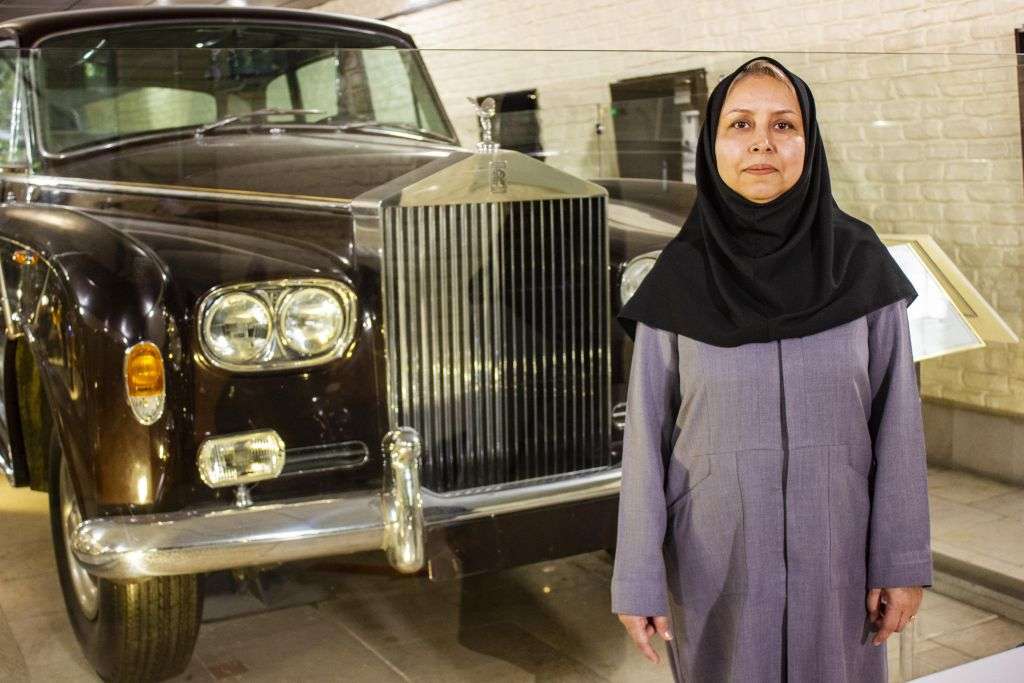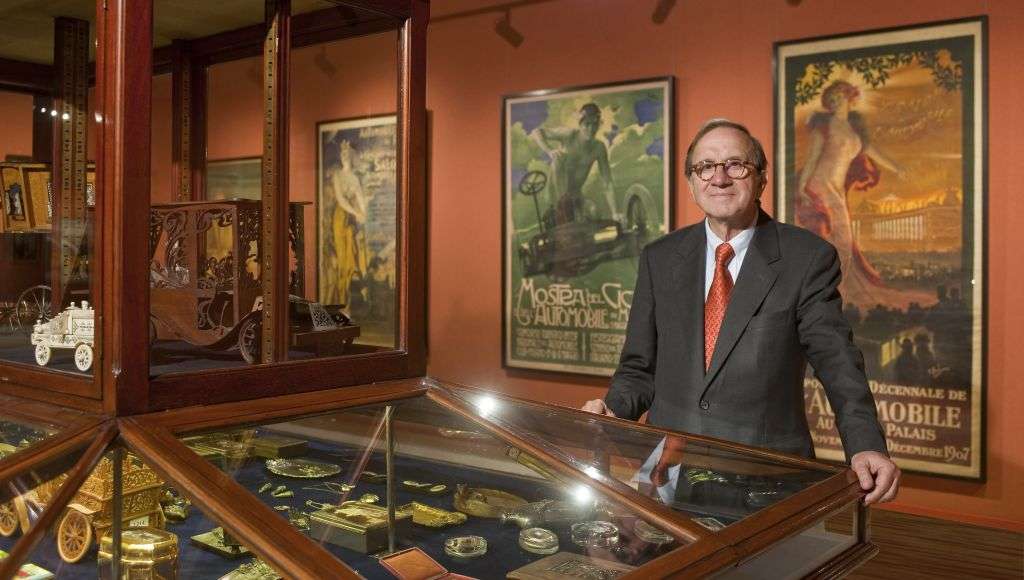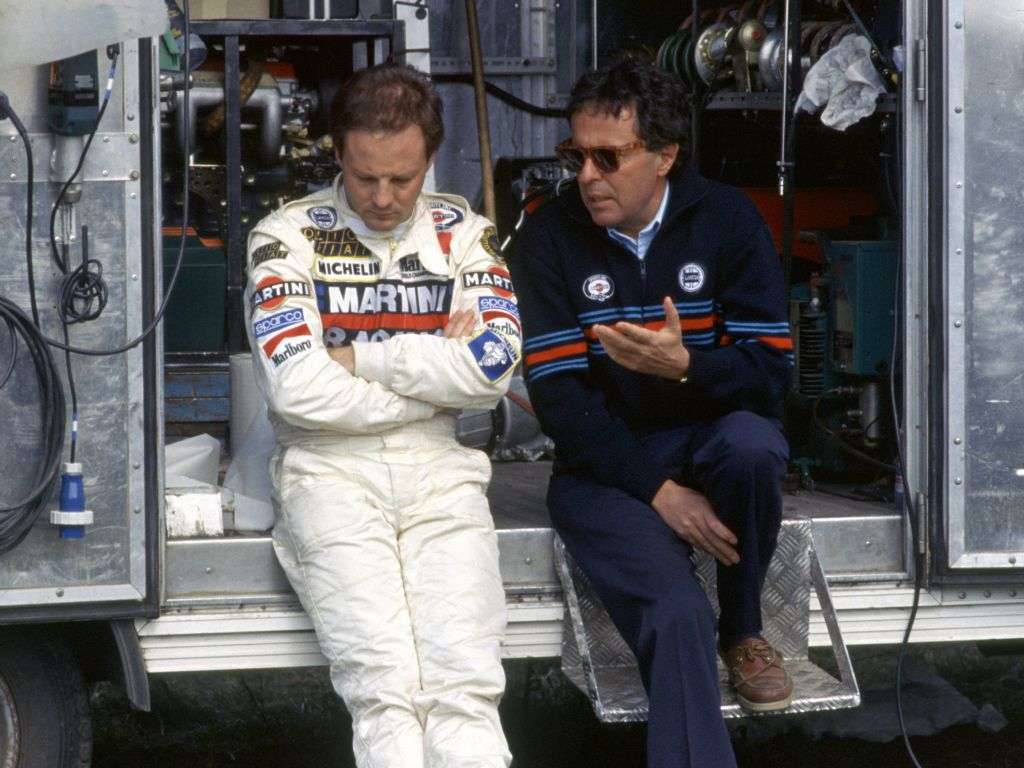Elisabeth Junek, Cesare Fiorio, Battista Pininfarina, Soichiro Honda, Rosemary Smith and Walter Röhrl were among the nine new inductees for FIVA’s Heritage Hall of Fame this year, adding to its roster of 14 significant people chosen from across the car world in 2021.
Worldwide historic vehicle lobbyist Fédération International des Véhicules Anciens (FIVA) is best known for its work with governments to keep classic cars on the road, and curates the ID documents (FIVA Cards) used to authenticate them in more than 80 countries.

For the second year of nominations, the Hall of Fame judges included renowned car enthusiast (and Hagerty author), Jay Leno; Pink Floyd drummer and car collector, Nick Mason; former FIVA president, Patrick Rollet, and acting FIVA president, Tiddo Bresters.
Bresters said: “Not every hero of the motoring world is a household name. Induction into the FIVA Heritage Hall of Fame is a tribute to an individual’s genuine lifetime achievements, but it’s a very personal selection. It reflects the opinions of FIVA clubs around the world, who nominate their own favourite national figures. Some of these heroes are world-famous, others are names you might not know – but each has made a real and long-lasting impact on automotive history.”
Czech Republic: Elisabeth Junek (1900–1994)

Placing fifth on the Targa Florio is no mean feat – but for the first woman to win a Grand Prix, Eliška Junková, otherwise known as “Queen of the Steering Wheel” or “Miss Bugatti” it was business as usual.
Having Anglicised her name to the more pronounceable Elisabeth Junek, her racing career began in 1923, having ridden shotgun as riding mechanic for her husband, Čeněk, a year earlier owing to a hand injury which prevented him from changing gear.
A Bugatti patron, Junek competed in two Targo Florios; she was denied victory in a Bugatti 35B in 1927 when the steering gear broke three laps into the five lap, 335 mile race. Later in 1927, she won the two-litre sports car class of the German GP in its first ever use of the Nürburgring circuit, driving a Bugatti Type 35 and placing fourth overall.
The following year, she returned to the Targa Florio in another, new 35B, having walked the 108km (67 mile) course a month prior to memorise its 1500 corners. She placed fifth, ahead of the likes of Louis Chiron, Luigi Fagioli, and René Dreyfus.
Following Čeněk’s death in the 1928 German GP, Elisabeth Junek turned to travelling, having decided never to race again. Her considerable achievements deserve more recognition.
Italy: Battista Pininfarina (1893–1966)

Pininfarina’s influence as a coachbuilder and design studio is hardly in doubt, but the firm, Carrozzeria Pinin Farina created by Battista ‘Pinin’ Farina (‘baby’ in Piedmontese) in 1930, helped Italy climb to the top of the heap in the automotive world before and after World War Two.
Famous for its long-term partnership with Ferrari, it also mass-produced cars for Alfa Romeo, having won a lucrative contract from under Bertone’s nose to build the Alfa Romeo Giulietta Spider.
Other notable designs from Battista’s period included a long-term relationship with the Austin Motor Company, later BMC, which included the ‘Farina’ saloon range, the Austin A40 and the MGB GT. Despite being a sought-after name, Pininfarina mingled humdrum commissions with more exotic work, including the highly-prized Ferrari 250 GT SWB.
Battista handed over the reins of the firm to his son Sergio in 1966, having sought out and planned its current home in Grugliasco, Turin, a decade earlier. By 1972, it had Italy’s only wind tunnel, and partnerships with GM, Mitsubishi and Volvo continued into the Eighties and Nineties, continuing his legacy.
Japan: Soichiro Honda (1906–1991)

Founder of the fiercely independent Honda Motor Company, the self-taught Soichiro Honda led the firm from humble beginnings to a multi-billion-yen engine, motorcycle and car manufacturer.
The judges were particularly impressed with Honda’s environmental credentials, which began with its Compound Vortex Controlled Combustion (CVCC) engine in the Seventies – a unit that could pass American federal emissions standards without using a catalytic convertor.
Latterly renowned for its high-revving VTEC powerplants, it also gave the world the first mass-produced (and now highly appreciating) aluminium monocoque super car in the form of the NSX, and mobilised millions of post-war motorists with its Cub and Super Cub motorcycle range.
Italy: Cesare Fiorio (1939–)

A towering figure in international motorsport, Cesare Fiorio achieved considerable things as Ferrari’s F1 racing manager, overseeing 25 podiums and 9 victories out of 36 Grands Prix. [Factoid: Fiorio walked away from Ferrari after management blocked his signing of Senna alongside Prost. Ed.] Rally fans know him better for his four decades work at Lancia; under his guidance, the marque became synonymous with the sport.
HF Squadra Corse, Lancia’s official motorsport department, won the very first European World Rally Championship with a Fulvia in 1969. As the Seventies dawned, the wedge-shaped, Ferrari V6 engined Stratos took the 1973 European Rally Championship and three events in the 1974 World Rally Championship.
Fiorio saw to it that the 037 was the last rear-wheel drive car to win a manufacturers’ championship in 1983 as rallying’s Group B era mushroomed. Having lost Walter Röhrl to Audi, he then pressed on with the development of the manic Delta S4.
Following Henri Toivonen’s death on the 1986 Tour de Corse, along with navigator Sergio Cresto, Fiorio soon had an answer to the new Group A regulations: the Delta Integrale. Having gone on to win six consecutive manufacturers’ titles between 1987 and 1992, it also spawned a fearsome and much loved homologation road car.
Iran: Shahrzad Paknyat-Hamedani (1971–)

The National Car Museum of Iran owes many of its exhibits to the long-standing work of Shahrzad Paknyat-Hamedani, who worked for decades to retain the car collection of the last Iranian Shah, Mohammed Reza of the Pahlavi Dynasty, which was overthrown in the Islamic Revolution of 1979.
Having fled the country with his family, Reza left hundreds of cars behind. Not only did Shahrzad Paknyat-Hamedani track down and save many from the crusher, she got the cars, including Ferraris, Rolls-Royces and several valuable pre-war Mercedes-Benz, recognised as cultural artefacts, leading to the formation of the National Car Museum of Iran, opened in 2001.
Germany: Walter Röhrl (1947–)

Walter Röhrl already has two other hall of fame inductions to his name: the Rally Hall of Fame in 2011, and Germany’s Hall of Sports Fame in 2016.
But honours like that pale in comparison to his competition history, with World Rally Championship victories in 1980 and 1982 (for Fiat and Opel respectively) and rally victories in first the stunning Lancia 037 Group B car in 1983, and then the monstrous Group B Audi quattros from 1984 onwards.
A long-established test driver and later brand ambassador for Porsche, he also set the 1987 Pikes Peak International Hill Climb record; his time, of 10 minutes and 47.850 seconds, was Audi’s last in the world of rallying.
Ireland: Rosemary Smith (1937–)

International rallyist Rosemary Smith demonstrated her driving skills behind the wheel of a Renault RS17 Formula One car in 2017, but before that, she was an acclaimed works driver for Rootes Group.
Best known for her 1965 outright win of the Tulip Rally in a Hillman Imp, she took the Ladies’ prize a year previously on the Circuit of Ireland rally, campaigning a Sunbeam Rapier.
Further victories on the Cork 20 rally, Alpine Rally, Canadian Shell 4000 and Acropolis Rally helped women break further into rallying. A pioneer in a motorsport discipline dominated by men, Smith blazed a similar trail to the late Pat Moss-Carlsson, Michèle Mouton, and Louise Aitken-Walker, as well as her contemporaries Christabel Carlisle and Bron Burrell.
The Netherlands: Evert Louwman (1940–)

Evert Louwman, the Dutch importer for Toyota, Suzuki (and latterly Lexus), has run the Dutch Louwman Museum, also known as the Louwman Collection, since 1969. Among many other artefacts, he helped broker the deal to rescue the only known remaining Toyota AA from Siberia, a car not even Toyota itself has an example of.
One of the oldest private collections of historic vehicles in the world, the Museum dates to 1934, and now comprises more than 275 cars from 18 countries (and more than 100 manufacturers). If you’re ever in the Netherlands, it’s on the outskirts of The Hague and less than a 50 minute drive from Amsterdam.
Argentina: Luis Spadafora (1944–)

Juan Manuel Fangio, José Froilán González and Carlos Reutemann, et al: Argentina’s rich motoring heritage has found a home in Luis Spadafora’s Museo del Automóvil, Buenos Aires, which opened in 1998. For that alone he would have made the list, but his car collection is also worthy of inclusion.
Comprising a 75-strong collection of historic vehicles, the museum continues to provide a community space for car clubs and youngsters; it also houses the Cadillac ordered, but never used, by former Argentine former president Juan Domingo Perón in 1955.
Read more
The work and life of the man who “invented” horsepower
The evolution of the supercar in 10 giant leaps
National Motor Museum picks 50 objects that define motoring history








